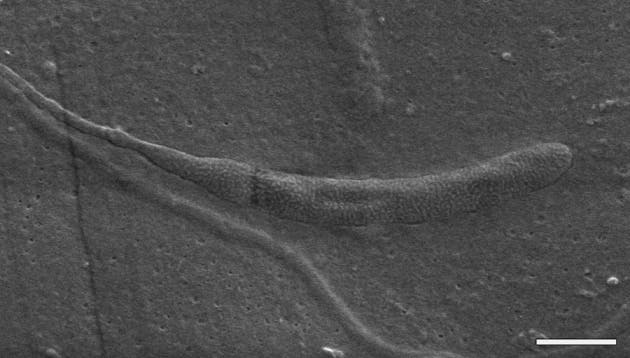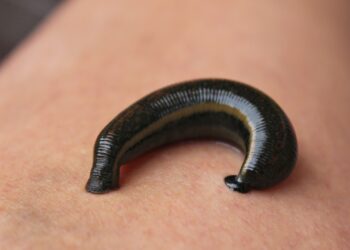Scientists have stumbled upon some incredibly old sperm in the wall of a fossilized cocoon in Antarctica. The remains of the long, thin cells represent the oldest animal sperm known to man – 50 million years old.

Benjamin Bomfleur, a palaeobotanist at Stockholm’s Swedish Museum of Natural History and the lead author of the study describing this finding spotted the sperm cells as he was conducting an analysis on the inner surface of the cocoon fossil. He was using a very sensitive electron microscope and said that the discovery came as a total surprise, one that amused him thoroughly but that is also highly significant.
“A 50-million-year-old worm sperm from Antarctica?” he said between chuckles. “Who would have thought that’s possible?”
It makes sense that there are a lot of sperm inclusions in cocoon cells. The cocoons are secreted by some worms which then store sperm and eggs inside, so it seems reasonable to assume that sometimes, the sperm is stored incorrectly outside of the cocoon. But surviving for 50 million years… that’s truly remarkable! Before this, the oldest known animal sperm came from Baltic amber, 40 million years ago.
“The discovery was a big surprise, but the result of a detailed search and Steve’s (co-author Stephen McLoughlin) keen eye for the unusual. We both were aware that it may be rewarding to take a particularly close look at the cocoon fossils because they might contain “microinclusions” (like amber). It was then, Steve, who was analysing the structure of this particular cocoon fossil using a scanning electron microscope at very high magnification, first noticed the spermatozoa inclusions,” said Bomfleur.
For now, researchers don’t know exactly what worm left this sperm. Scanning electron microscope images show helical structures resembling drill-bits and beaded tails, which are highly characteristic of crayfish worms – closely related to earthworms and leeches that feed on material found on the surface of their crayfish hosts. However, scientists do have their hunches regarding what might have left this behind.
“At present detailed comparisons with living leeches are difficult. However, they do appear strikingly similar to those of ‘Branchiobdellida’ – a peculiar group of leech-like worms that is today only found living symbiotically on crayfish in the Northern Hemisphere. Quite perplexing!” Bomfleur told HT in an email interview.

The structure of worm sperm cells has been studied in surprising detail in the past decades, but researchers only recently gained access to instruments that allowed them to thoroughly see the defining microstructures. Bomfleur thinks that future studies will reveal how the sperm of the worms changed as the species evolved.
“If it should turn out that we can get this information, all of a sudden we would basically unlock an entire fossil record for a group that hardly had any identifiable fossils before,” he says. Soft-bodied microorganisms that do not usually fossilize, including nematodes, have also been found preserved inside cocoons, but few researchers have studied them.
These cocoons may provide a unique window to the past, allowing an unprecedented view on worms – and yes, before you start wondering, worms are important. Jakob Vinther, who studies invertebrate evolution at the University of Bristol, UK, explains that understanding ancient worms could allow us to better understand the origin of earthworms and leeches.
“I think we might have a really interesting system here that can be sort of a hidden window to the past,” he says. “There could be a lot of potential hidden gems inside those cocoons.”
However, before your Jurassic Park dreams get amped, you should know that there’s absolutely no chance to get any DNA material from that sperm. Even if it is incredibly well preserved, it has no organic material.
“… even if they should be preserved with original ultrastructural details, the chemical make-up of the organic material will have changed from its original composition over time in the course of fossilisation––there will certainly be no extractable DNA left,” said Bomfleur.
Journal Reference: Benjamin Bomfleur, Thomas Mörs, Marco Ferraguti, Marcelo A. Reguero, Stephen McLoughlin. Fossilized spermatozoa preserved in a 50-Myr-old annelid cocoon from Antarctica. DOI: 10.1098/rsbl.2015.0431






